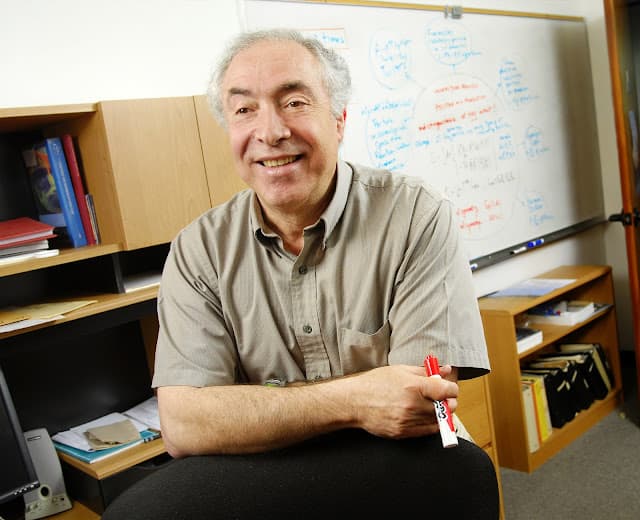As science fiction would have you believe, you can’t really go to “another dimension.” Dimensions are more about how we see the world. But some things point to not just one, but two dimensions of time, according to one expert. If it were true, the theory could fix the biggest problem in physics, which is that quantum mechanics and general relativity don’t agree with each other.
Itzhak Bars from the University of Southern California in Los Angeles says that’s the case. Up, down, left, right, forward, back, and space-time are the normal three dimensions. In Bars’s theory, time is not a straight line. Instead, it is a curved 2D plane that is woven into all of these dimensions and more.
Dr. Bars has been working on “two-time physics” for more than ten years. All of this started when he started to wonder what time has to do with gravity and other forces. Even though the idea of more dimensions sounds strange, more and more physicists are thinking about it because it could help create the “theory of everything” or “unified theory of physics” that everyone wants. This would put all of the basic forces of the universe into a single, simple math equation.
With two dimensions of time, it would be possible to go back in time. At some point, time stops moving in a straight line and starts to loop back on itself. You could go back or forward in time this way. It also brings up the so-called “grandfather paradox.” This means that your maternal grandfather will die by accident before your mother is born, which means that you will not be born. So, if there are all these other dimensions, why don’t we feel them? In the theory of two times, they are so small that we can’t see them. From this point of view, we are always moving through these tiny, balled-up dimensions, but we never notice them.
Bars says that if we could make technology at the subatomic level, we might be able to find these extra dimensions. Another thing to think about is that the electrical charges on some particles may be real because they interact with these other dimensions of space.
Since 1995, when it was first thought of, M-theory has turned physics on its head. Dr. Michio Kaku, a well-known physicist, says that this is a superstring theory, which is the only one that can fix the confusing gap in physics. All together, M-theory has 10 dimensions of space and one of time.
“membrane theory” is what “M-theory” stands for. Some people refer to it as “the mother of all theories.” The universe is made up of different membranes, according to this unified theory. String theory says that quarks, the smallest particles in the universe, are made up of energy strings that vibrate. Each has a different pitch, like the strings on a harp.
Each vibration represents a different particle, such as a proton, an electron, etc. They also explain the four natural forces of the universe: gravity, electromagnetism, and the stronger and weaker nuclear forces. There are five different ways to think about strings, and the m-theory ties them all together.
Physicists used to work with a theory of “super-gravity” before this. In this theory, the universe is not made up of strings, but of membranes called “branes.” Mm…branes. This was also used in M-theory. Today, we think of all of these as different parts of the universe’s superstructure, which is a single framework that holds everything together. m-theory says that string theory and super-gravity theory can mathematically fit together.
In general, the m-theory is still hard to understand. Bars said, “No one has yet told us what the basic form of m-theory is.” He and his colleagues only have a few hints to work with. The work of physicists now and in the future is likely to help explain more. It was m-theory that made Bars think about time going in more than one direction. With his two dimensions of time and m-10 theory’s dimensions, we would live in a 13-dimensional universe.
According to the two-time theory, the four dimensions we are used to are just a “shadow” of the six real dimensions we see. If this turns out to be true, it will change everything we know about physics. Heisenberg’s principle says that you can only measure a particle’s position or momentum at the same time. Why has it been a puzzle? Maybe they are happening at different times.
Bars says that at any given time, it is impossible to tell where a particle is and how fast it is moving.
1 If you change the position for the momentum, the physics stays the same. Look at a wooden box. It is the same whether you look at the right or left side. The same kind of symmetry is true here.
To find speed, we divide the distance by the amount of time. But if position and momentum can be switched around, that means that each can have its own time dimension. In this way, it’s possible that the universe is hiding from us an extra dimension of time.
Bars says that the two-time theory is more than just a clever way to do math. He told the New Scientist, “These extra dimensions are out there, and they are as real as the three dimensions of space and one of time we directly experience.” 2 If it turns out to be true, it could help us figure out why we haven’t been able to find axions, which are thought to be the building blocks of dark matter, despite our best efforts. Bars thinks that experiments at CERN’s Large Hadron Collider (LHC) near Geneva, Switzerland, could prove his theory right in the long run.

